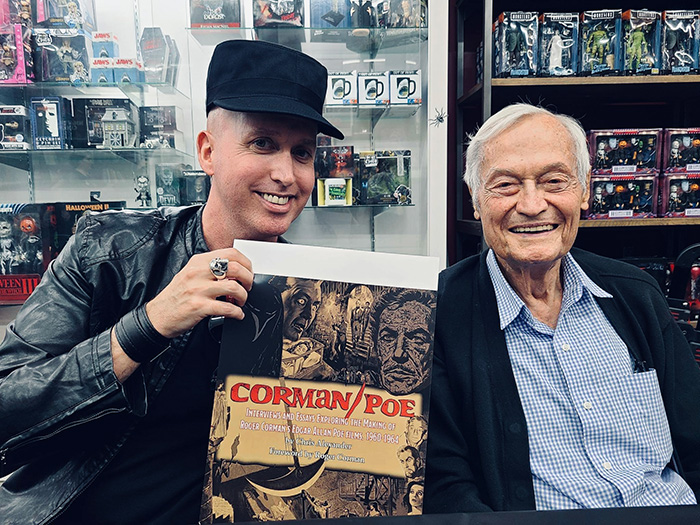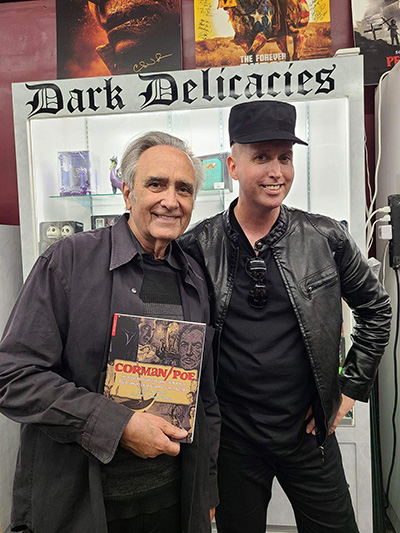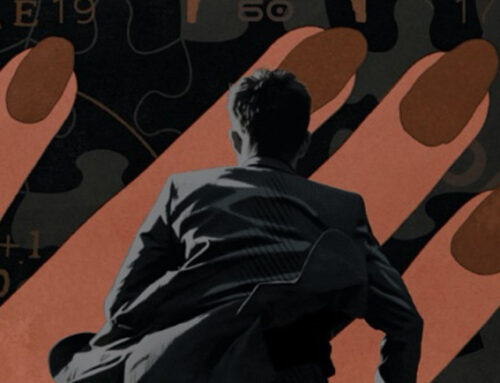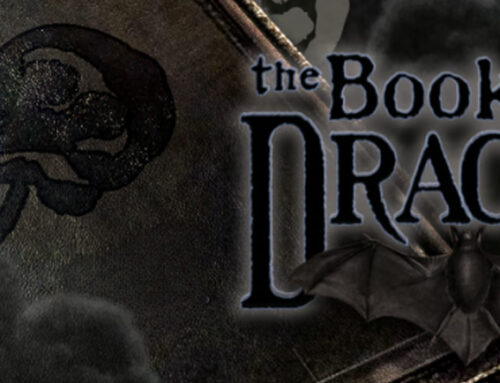For over 60 years, the groundbreaking filmmaker Roger Corman and his eight Edgar Allen Poe films that have continued to delight and impact generations of horror film fans, are being explored in in-depth interviews in the book Corman/Poe.
Corman/Poe by Chris Alexander catalogs the significance of these eight iconic Poe films, with love as both a horror fan and as a friend to Roger and Julie Corman. Combining old and new interviews with Roger over their 20-year friendship, Alexander created this book as a labor of love to preserve Roger’s memories of these amazing films and their cinematic impact.
Alexander is a Toronto-based horror filmmaker, author, composer, film critic, journalist, and magazine editor. Among his credits as a director include a series of ten independent horror films and documentaries with horror icons David Cronenberg, George A. Romero, and Guillermo Del Toro. Alexander was also the third editor-in-chief for the iconic Fangoria magazine and is the co-founder/editor of Delirium magazine.
In our interview, Alexander shares with us meeting Roger for the 1st time, to his passion for Corman films, to what’s in store with his future projects.

Bonilla: How did you meet Roger?
Alexander: How did I first meet him? I met him with my eyes glued to a late-night television screen on one level. On the other level, when I started to become professional as a writer.
I met him for the first time in the flesh when we did our launch at Dark Delicacies on June 10th, 2023. I ordered a limo to pick Roger up, bring him to the store, and he walked through those doors. I got to meet my hero, my mentor, the man, the man, the myth, the legend, Roger Corman. I was incredibly nervous.
I’ve known Roger for 20 years. Growing up with him, you consider these myths, these heroes, these larger-than-life artists to be kind of Gods to you. You feel like you know them because they speak so strongly to you, and they inform so much of your life. You feel like they’re family or you feel like you’re a part of their world, even if they don’t know you exist.
For 20 years, I had a friendship with Roger through journalism. Through The Toronto Star, anytime the opportunity to interview Roger came up, I was part of it. And then befriending Julie Corman as well, who’s wonderful, and is such a huge part of that operation that they run. An unsung hero. I really love Julie. I became very close to her and became kind of a part of the little Corman universe in a way. They had a YouTube channel for a while, and I helped him out with some of that stuff. I’ve always been in their orbit, and it’s never stopped.
What would you consider your favorite Corman/Poe movie?
I wrestled with it in my head all the time. Which one’s the best versus which one I love the most? I think probably The Masque of the Red Death is the best. It’s the most accomplished piece of cinema that’s genreless and not just a horror movie. It’s so many different things. And obviously the pedigree of where it was shot, the supporting cast, the production design, and the cinematography. It’s a big movie, an art film as much as it is a horror movie.
Pit and the Pendulum is my all-time favorite. There’s no doubt about it. I think it’s the best horror film in the series. Pit and the Pendulum is the best horror film, and The Masque of the Red Death is the best film.
What are some of your favorite non-Poe Corman films?
There’s so many great films to choose from, I’d be hard-pressed to find a favorite. I’m such a huge fan. It’s endless because there’s so many different waves of Corman. Corman the director, Corman the producer, etc.
I think that I’m not alone and it’s not a bold or brave thing to say, but Corman is one of the great directors of all time. I view Corman as the director the same way I view Clint Eastwood or Don Siegel, these kinds of no-bullshit, get-in-there, get-the-job-done, and make-it-look-easy directors. They’re creating art. But it’s so matter of fact and so unpretentious that you’re not even quite sure its art until you’ve digested it and it’s been sitting around a while. Then, you start to see the auteur develop when you watch a series of those films back-to-back.
With Roger, there’s so many different periods of his career as a director. I like a lot of that early stuff. I like the stuff he did with Chuck Griffith like Little Shop of Horrors and Creature from the Haunted Sea. I love Bucket of Blood. I think Bucket of Blood is a masterpiece. It’s hilarious. I think Attack of the Crab Monsters is great. Not of This Earth. There’s always something clever going on with the sci-fi horror stuff. All that stuff’s great.
I have to give a special shout-out to some of Roger’s gangster stuff. I think Machine Gun Kelly with Charles Bronson is a masterpiece. I think Bloody Mama with Shelley Winters is an absolutely barbaric film. I have a print of that. I watched that again recently by myself. I was shocked by just how violent and cruel and tough it is. It’s also wildly cinematic and totally alive.

How did you come up with the idea for the book?
I loved the films. I have loved them since I was a child. I say that in my intro to the book and it’s true. I was raised not just by my parents, but everyone even in the peripheral of my family loves movies. So movies were always a part of the conversation. Movies were always happening and being shown to me by my parents. I was always at the movie theater. There’s just a big part of my life.
The first 10 years of my life were idyllic in a way. But it all fell apart when I was 10. My parents always fought. They were always at odds with each other, always disagreeing with each other. They were probably a bad match. I know they were a bad match. But they always found common ground with films.
My father was a great raconteur, a great storyteller. He could have been a great artist. He was telling me about this movie he saw late at night called The Raven. And it’s how wild it was and was directed by this guy, Roger Corman, with Vincent Price and there’s dueling magicians. I’m just sitting there thinking, “This sounds amazing!” That was before the internet. No video, no nothing. If the movie came on TV, and you were lucky if you saw it, that was it. Then it faded away into the ether and became a myth.
Then my mother countered that with stories about her at Toronto’s Kingsway cinema, which is still around, as a young girl going to see the American International stuff and the Corman stuff and the Poe movies. Walking through the graveyard home at night with their friends trying to scare themselves.
So it was these great stories, not just watching cool movies, but how they reacted at key points in their life to those movies that made me aware of who Roger was. So that’s kind of how I discovered those movies. Then as you age, you try to track these things down, and I found them on late-night television before VHS. They’re part of the fabric of who I am as a human being, not just a movie lover.
For the book itself, I’ve been writing articles about Roger and interviewing him for 20 years. I have this hard drive that I found during the pandemic, as I’m going through my vaults under lockdown, sifting back through a decade-plus of interviews and finding all kinds of gold. Amazing chats and sit-downs at restaurants. Just turning on the devices with all these people, some of them no longer here like Toby Hooper and George Romero, and tons of stuff with Roger. Every time I interviewed Roger, never mind what the subject was, I’d always find time to sneak in stuff but the Poe stuff. I wanted to know.
I had all this great stuff. Some of it published. There was a lot of it just sitting there in the dirt. I didn’t want it to live or die either in the pages of a magazine back issue or a hard drive. I thought, “Well, God knows I have time.” So, I called Roger up and told him, “I want to write this love letter to the Poe films.” It’s been done before. People have been talking about these movies for 50 years now.
I wanted to isolate it like Hitchcock/Truffaut. This is kind of an ode to that, where it’s just Roger and me. I have interviews with everybody else. I didn’t want to put them all into the party. I just wanted Roger and me talking about these films from a directorial standpoint, where he was, and put them in chronological order. Then Roger agreed and we spent many more conversations during the lockdown, putting putty in the cracks, and asking new questions. I’d go back and watch the film and I’d come up with other things I wanted to ask. He was always game because he had nothing going on either.
The book is a result of a lifelong love for these pictures. A lifelong affection and admiration for Roger Corman, the man, and the artist. But the impetus for it was, “I’m under lockdown. I have all this stuff. I’m creative. I need to be creative. So I want to make a book.” And I did.
You’ve interviewed horror legends on film, like David Cronenberg, George A. Romero, and Guillermo Del Toro. What were those experiences like for you?
Being born and raised in Toronto, in a certain period where there was no horror film culture. Monster kid culture sort of did in the States, but we didn’t have that. We didn’t have the internet, so we were kind of locked down. We’d get Fangoria when we could, but then it got banned here for a while. It was hard to find it. I had to buy it used in porno bookshops in Toronto and the backs of the bookshops. I remember buying Linnea Quigley with the chainsaw on the cover. I had to climb up because I was too short to reach through the Swanks and the Hustlers to pull it out. That’s when you could find it.
Sometimes you’d find it in weird places like my girlfriend, later my ex-wife’s cottage. This little marina. I remember that would be the one place they would carry Fangoria. So every Summer I’d drive the boat to it and get it. It was really hard to find, but that made it more fun. So meeting these guys was impossible.
In what fucking universe would I ever get a chance to meet George Romero? There’s no conventions. Now David of course, being a local guy and one of my idols, the odds were that I could probably meet David. And I did years into the business.
Long story short, I had the rights to do the documentary about the story of Cinépix which was the Montreal studio that discovered David and produce Rabid and Shivers. I became friends with John Dunning who was the other half outside of André Link who founded Cinépix and mentored David. David called John his, “Movie Dad”. I became good friends with him. We stayed in touch for many years. I couldn’t get the financing because back then, nobody, especially in Canada saw any value in this chapter of our history. Let alone there were no video special features or any of this sort of stuff. So nobody cared. I couldn’t find the financing. But I stayed in touch with all the players.
Years into my friendship with John, he got stuck with leukemia and was on his deathbed. I urged the Toronto Film Critics Association of which I was at that time a member, to give him a lifetime achievement award, the Clyde Gilmour Award for his contribution to Canadian film. They said no. To them, he was just the guy that produced Ilsa, She Wolf of the SS. Completely no value. So I brought David on board for that. I asked David, “Look, I want to do this. Will you help me?” He said, “Of course, I’ll help you.” So we did this whole video presentation, and we went to the association. Of course, as soon as I brought David on board, they’re like, “Okay. Sure. Great idea.”
I flew down to Montreal when it was announced in the newspaper and I said to John on his deathbed, “Look man, check this out.” On his deathbed, he was writing My Bloody Valentine Two by the way. He’s like Roger, he worked right to the end. Which Roger will be doing, although there’s no real ended sight as of this interview, that’s for sure. I was able to present that to John and then he died. Then posthumously, David and I presented the award at the show with his son, and it was great.
David and I have been friends for a long time, both personally and in the context of journalist and subject. I was in his orbit when his wife died, and after that, he went into a sort of chrysalis, and I wasn’t sure if he would ever work again. Then a couple of years later, my own father died in my arms, also from cancer. During that process, David was instrumental in helping me get through that. So the friendship is key. We’ve done a bunch of stuff together, like little short documentaries, and we worked together on the recent Shivers Blu-ray together. I consider him a friend. And I’m friends with his son too. We were in the same band together.
Romero moved to Toronto in 2004, when he made Land of the Dead, so he became a Torontonian. And all of his horror guys kind of gravitated toward him. Because I ran Fangoria, I had much more opportunity to get a little closer to him. We became friends. We used to go for sushi, like once a month. I used to go to his house once a month, sometimes twice a month. We’d drink scotch while he was writing the Marvel Empire of the Dead Comics and he’d start to get drunk and just tell me stories. I would turn the device on, and I got acres of gold with him.
He created a statue, where he’s holding my severed head. It was the prototype of something that he was going to be creating for his fans, which never came to pass. So I have one of the only statues ever made from this line of him holding my bloody head and he’s smiling. It’s a full-scale 3D-printed statute. It was crazy. I was the first guy to speak at his funeral, even before Tom Savini or Greg Nicotero.
It’s bittersweet. Pinch me that I was part of that world. I miss George every day. I missed the man. I miss the laugh. I miss the sense of humor. I missed the stories. But thank God, the movies, I’ll never miss because they’re everywhere. The impact is huge. So I’ve been very lucky to not only meet these people that I thought existed in another dimension but also consider them friends, genuine friends.
What recent projects for future projects are you working on?
I have made 10 films in 10 years. I make them my way, with very modest budgets for third-party investors. They always make their money back, so they leave me alone and I’m able to make these movies completely my way. Even though they’re 10 movies, I consider them to be one movie. Each one of them has the same theme, rearranged in a different way. A lot of the same players play sometimes versions of the same character, sometimes the same character. They’re kind of reinventions of themselves and they’ve managed to create a kind of little microscopic world.
As far as making more films, I think Parasite Lady is a beautiful way to end it. Parasite Lady was kind of a drop-the-mic because I think I’ve said all I can say within the parameters of that budget, with that style. I think it’s the best thing I’ve done. And I think I’ll let it rest there for a while.
And never say never. I’m sure there’ll be something else on the horizon. But right now, I’m focused on this book, focused on some of the work I do with my buddy, Charlie Band, who I work with, helping to run Full Moon Studios in LA. We publish Delirium together. And there’s a lot of things to be done there. So I’ll just focus on my pen for a while.







